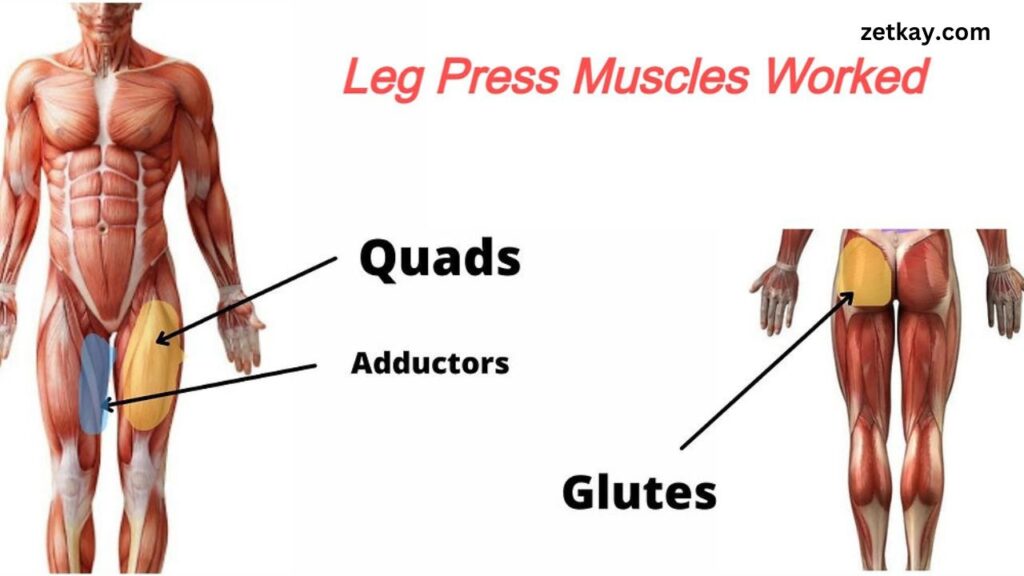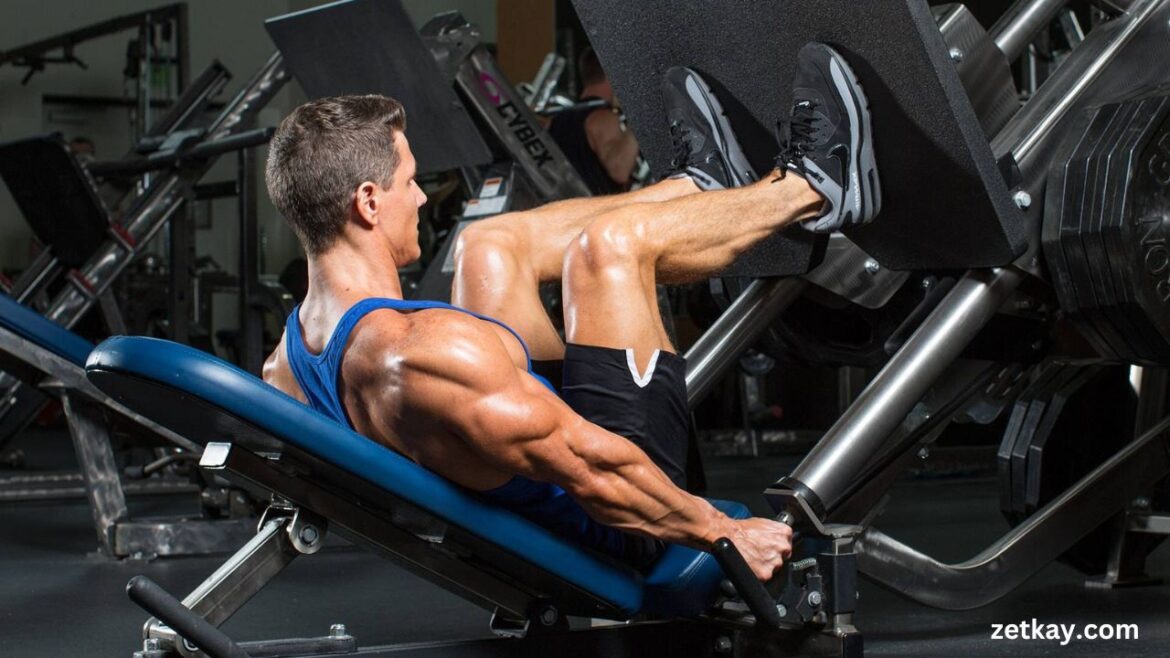The leg press exercise is a fundamental lower-body workout, highly effective for building strength, improving endurance, and enhancing overall athletic performance. It is widely used by both beginners and experienced gym-goers because of its simplicity, safety, and adaptability. Whether you’re targeting the quadriceps, hamstrings, or glutes, the leg press is a must-have exercise in your routine.
This guide will cover everything from the basics of leg press to advanced tips and frequently asked questions, helping you understand its full potential and execute it flawlessly.
What Is the Leg Press?
The leg press is a machine-based resistance exercise that primarily focuses on strengthening the lower body. It involves pushing a weighted platform with your legs while seated or reclined, with your back supported against a pad. Unlike free-weight exercises like squats, the leg press reduces the risk of injury by providing stability and control during the movement.
Why Choose the Leg Press?
The leg press is versatile, making it suitable for individuals of all fitness levels. Whether you’re recovering from an injury, seeking to isolate specific muscles, or increasing overall strength, the leg press can be tailored to meet your needs. Additionally, it offers:
- Low risk of injury.
- Easy learning curve for beginners.
- Precise targeting of lower-body muscles.
Muscles Worked by the Leg Press
The leg press is a compound exercise that works several muscles simultaneously. Here’s a breakdown:

Quadriceps
The quadriceps, located at the front of the thighs, are the primary muscles involved in the leg press. They extend the knee and are responsible for pushing the weight upward.
Read More:
5-Minute Jumping Jacks Workout to Boost Your Energy
Glutes
The gluteus maximus, the largest muscle in the buttocks, plays a crucial role in hip extension during the leg press. Adjusting your foot placement can increase glute activation.
Hamstrings
Situated at the back of the thighs, the hamstrings stabilize the movement and assist in pushing the platform.
Calves
The calf muscles, specifically the gastrocnemius and soleus, help stabilize your feet and contribute to the pushing force.
Core Stabilizers
While not a primary focus, your core muscles assist in maintaining balance and stability during the exercise.
Benefits of the Leg Press
The leg press offers numerous benefits, making it a popular choice for gym enthusiasts. Let’s explore its advantages:
Muscle Isolation
Unlike squats, which engage multiple muscle groups, the leg press isolates specific lower-body muscles. This makes it an excellent choice for targeted strength training.
Reduced Joint Stress
The machine’s design minimizes stress on the spine and knees, making it suitable for people with joint issues or back pain.
Controlled Movement
The guided motion of the leg press reduces the risk of improper form, ensuring a safe and effective workout.
Versatility
With various foot placements and machine types, the leg press can be customized to target different muscle groups or accommodate individual needs.
Progressive Overload
The leg press allows for easy weight adjustments, enabling gradual increases to build strength over time.
Types of Leg Press Machines
Horizontal Leg Press
The horizontal leg press features a flat platform and a seated position. It’s beginner-friendly and offers a straightforward movement pattern.
45-Degree Leg Press
This is the most common type found in gyms. The inclined position mimics a natural movement, making it suitable for heavy lifting.
Seated Leg Press
In the seated leg press, the user sits upright. It’s often used in rehabilitation settings due to its low-impact nature.
How to Perform the Leg Press
Executing the leg press with proper form is essential for maximizing benefits and avoiding injury. Follow these step-by-step instructions:
Adjust the Machine
- Position the seat so that your knees form a 90-degree angle in the starting position.
- Ensure your back is flat against the pad and your head is supported.
Position Your Feet
- Place your feet shoulder-width apart on the platform.
- Point your toes slightly outward for better alignment.
Begin the Movement
- Grip the handles for stability.
- Slowly lower the platform by bending your knees, keeping them aligned with your toes.
Push Back Up
- Press through your heels to return the platform to the starting position.
- Avoid locking your knees at the top.
5. Maintain Proper Breathing
- Inhale as you lower the weight and exhale as you push it back up.
Common Mistakes to Avoid
Even though the leg press is straightforward, there are common mistakes that can hinder your progress or lead to injury:
Locking Knees
Locking your knees at the top of the movement increases joint stress and reduces muscle engagement.
Poor Foot Placement
Improper foot positioning can strain your joints and limit the muscles worked. Always ensure your feet are firmly planted and aligned.
Excessive Weight
Using too much weight can compromise your form and increase injury risk. Prioritize proper technique over heavy loads.
Lifting Hips Off the Pad
Your hips should remain flat against the seat to avoid lower back strain.
Shallow Range of Motion
A full range of motion maximizes muscle activation. Don’t cut the movement short unless necessary due to mobility issues.
Leg Press Variations
Single-Leg Press
This variation involves pressing with one leg at a time, helping to correct muscle imbalances and improve stability.
Wide Stance Leg Press
A wider foot placement emphasizes the inner thighs and adductors, providing a new dimension to the exercise.
High Foot Placement
Placing your feet higher on the platform shifts the focus to the glutes and hamstrings, making it ideal for posterior chain development.
Resistance Band Leg Press
Adding resistance bands increases tension throughout the range of motion, enhancing muscle activation and control.
Advanced Tips for Leg Press Success
Experiment with Tempo
Slowing down the movement increases time under tension, promoting muscle growth and endurance.
Pause for Intensity
Adding a pause at the bottom of the movement intensifies the exercise, increasing muscle engagement.
Track Your Progress
Keep a log of your weights, reps, and sets to monitor improvements and set new goals.
Combine with Free Weights
Pairing the leg press with free-weight exercises like squats or lunges creates a balanced lower-body workout.
FAQs
What muscles does the leg press target?
The leg press primarily targets the quadriceps, glutes, hamstrings, and calves. Foot placement and machine angles can adjust muscle emphasis.
Is the leg press suitable for beginners?
Yes, the leg press is beginner-friendly and provides a safe introduction to lower-body strength training.
How often should I do the leg press?
For best results, perform the leg press 2–3 times a week, allowing for rest days in between sessions.
What weight should I start with?
Begin with a manageable weight that allows you to perform 12–15 reps with proper form. Gradually increase as your strength improves.
Conclusion
The leg press is an essential exercise for building a strong and balanced lower body. Its versatility, ease of use, and adaptability make it a valuable addition to any fitness program. By mastering proper form, avoiding common mistakes, and experimenting with variations, you can unlock the full potential of the leg press and take your lower-body training to the next level.
